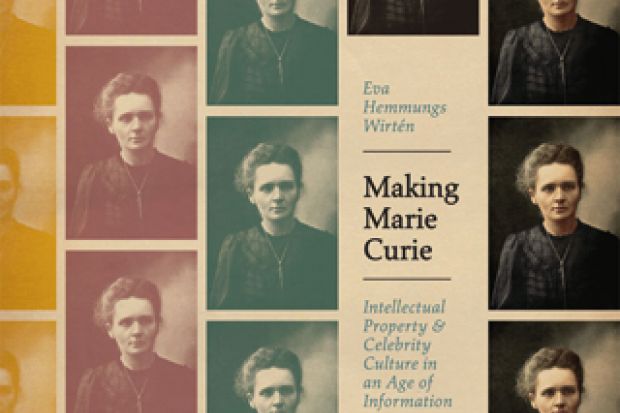When the widowed Marie Curie had an affair with fellow scientist Paul Langevin, their letters were stolen and leaked: the right-wing press had a field day, and five duels were fought to avenge Polish-born Curie’s honour. She had been accused of calculatingly – “scientifically” – leading Langevin away from his virtuous French wife: sexism and nationalism neatly packaged! These attacks sound tiresomely modern, but this was 1911, and Curie was already a “celebrity”.
Gender, celebrity and modernity are themes in Making Marie Curie, and Eva Hemmungs Wirtén offers some fascinating historical details. These include the gender and race politics that shaped the media’s response both to the affair and to Curie’s failed bid for membership of the French Academy of Sciences. There’s also “Missy” Brown Meloney’s extraordinary celebrity-building campaign that enticed American women to raise the equivalent of $1 million to fund Curie’s research. After all, Curie was the first woman to win a Nobel prize – and she won two of them – yet she was constantly struggling to fund her laboratory. This “crowd-funded” response by women to Curie’s poverty sounds inspiring, but Wirtén is not interested in heroic tales. Her aim is to deconstruct the Curie “myth” and, in the process, make “a modest contribution to rewriting the history of modern science”.
It is an important goal and Wirtén has some startlingly unsentimental opinions: she sees science as “a cult of genius and of masculinity” in Curie’s time, yet she is none too sympathetic to Curie, either. Her first chapter title reveals her position: “Me, myself, I: In the interest of disinterestedness.” She wants to show that there were two Curies: the altruistic public persona we revere, and the woman who worked tirelessly behind the scenes to secure the Curie legacy, and to control funding (including donations) for research into “her” elements – radium and polonium – even though she had given them away freely to science. She was, we read, a woman who claimed it was unethical to patent a naturally occurring element, even as she benefited from royalties on Pierre Curie’s patents on scientific instruments, and fought for intellectual property rights for scientists. Of course, there is a difference between patenting a naturally occurring element (or gene) and an invention, and Wirtén offers some insightful discussion on this complex topic. Unfortunately, it comes late in the book, after much has been made of the apparent contradictions in Curie’s actions.
Wirtén, it seems, sometimes confuses disinterestedness with altruism: scientific “disinterestedness” refers to the ability to make impartial contributions to the content of science, but she touches only briefly on the increasingly murky relationship between celebrity, funding and content. Nevertheless, she does raise some significant issues – such as whether or not the Curies’ refusal to patent radium served to benefit the radium industry rather than disinterested scientific research.
She also documents the first attempt to establish a universal scientific bibliography, which she sees as the beginning of the open-access information age. It was a vital task, to which Curie contributed via the League of Nations. Curie was also a key player in the league’s attempt to find a way to reward scientists for “pure” as well as “applied” research. In light of current constraints on research funding, and the debate over who should pay for scientific and other content, Wirtén’s excellent account of the complexity of the 1930s intellectual property debate is timely.
Using Curie as the vehicle for discussion on all the themes in this thought-provoking book is a strategy that enables Wirtén to draw a far more complex portrait than that of the legendary wife patiently stirring radioactive pitchblende, content to remain in her husband’s shadow.
Robyn Arianrhod is adjunct research fellow in the School of Mathematical Sciences, Monash University, and author of Seduced by Logic: Émilie du Châtelet, Mary Somerville and the Newtonian Revolution (2012).
Making Marie Curie: Intellectual Property and Celebrity Culture in an Age of Information
By Eva Hemmungs Wirtén
University of Chicago Press, 248pp, £24.50
ISBN 9780226235844 and 5981 (e-book)
Published 27 April 2015
Register to continue
Why register?
- Registration is free and only takes a moment
- Once registered, you can read 3 articles a month
- Sign up for our newsletter
Subscribe
Or subscribe for unlimited access to:
- Unlimited access to news, views, insights & reviews
- Digital editions
- Digital access to THE’s university and college rankings analysis
Already registered or a current subscriber? Login





